Last Updated on March 31, 2024
Seventy miles west of the Florida Keys lay a cluster of small coral islands called the Dry Tortugas.
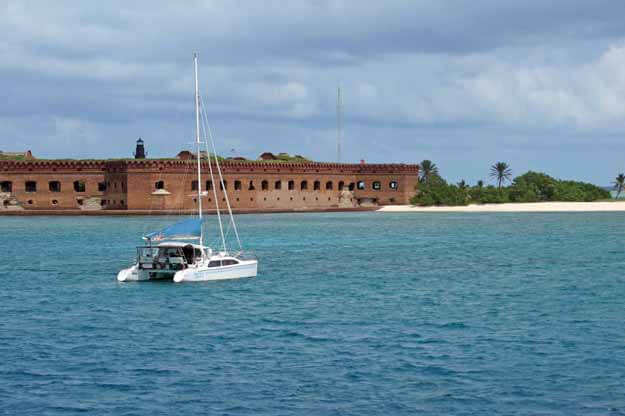
Surrounded by clear turquoise water and rimmed with crystalline sandy beaches, Ponce de Leon discovered the islands in 1513.
He found the area filled with sea turtles, thus calling it Las Tortugas (The Turtles). The “dry” designation warned newcomers that it was uninhabitable due to a lack of fresh water.
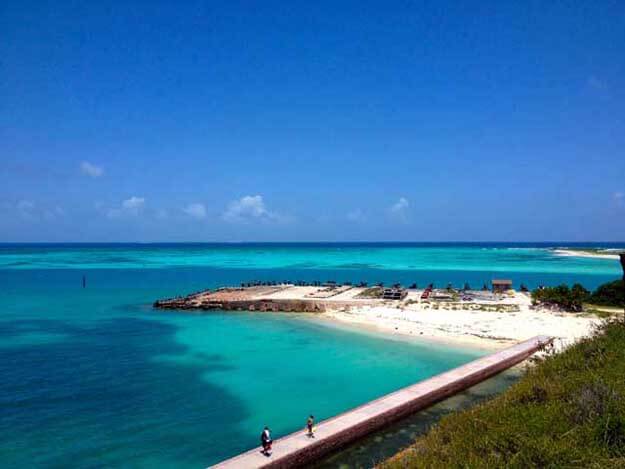
Today, this rare combination of marine wildlife refuge, a national park, and a 19th-century historical fort in a tropical, exotic setting makes it a trip you don’t want to miss while visiting the Florida Keys.
Table of Contents
Visiting Dry Tortugas National Park
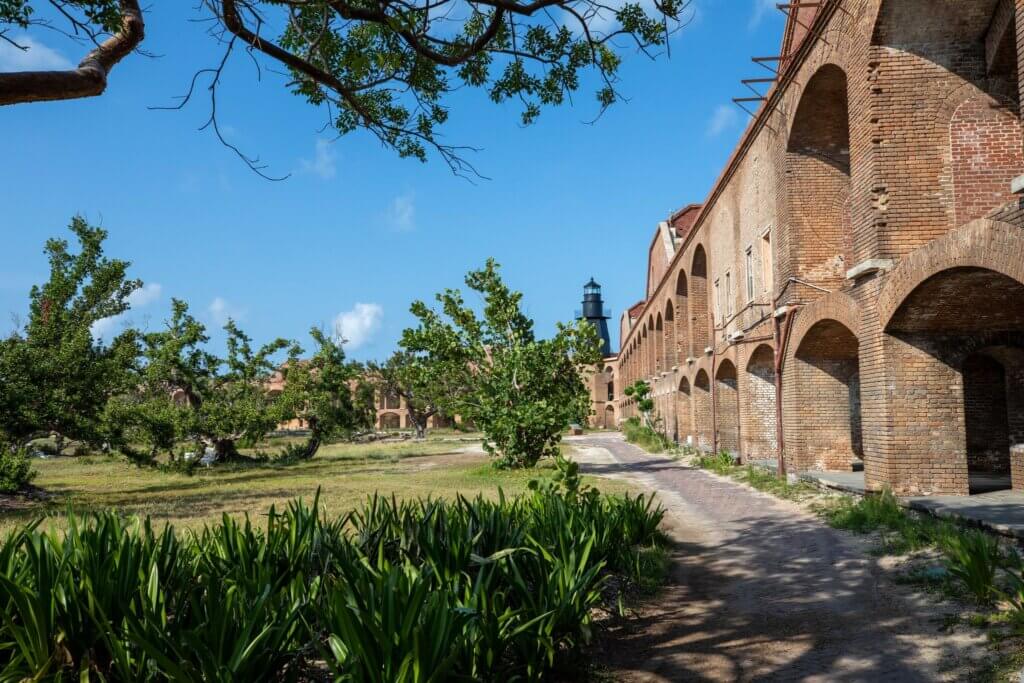
As the southernmost point along the maritime U.S. shipping lanes, the Dry Tortugas became a natural location for a military outpost.
This is the primary reason Fort Jefferson was built. Situated on Garden Key, the fort stood sentry over the Florida Straits protecting maritime interests in the Gulf of Mexico and along the eastern seaboard.
U.S. ships could easily find refuge and deep-water anchorage within the spacious 100 square miles of the Dry Tortugas.
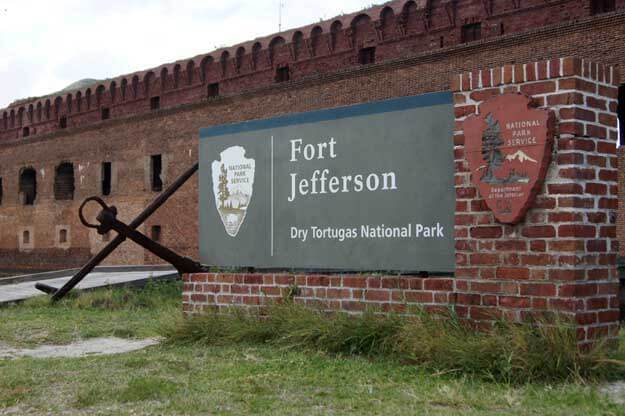
Named after President Thomas Jefferson, Fort Jefferson began construction in 1846 and continued for more than 30 years.
The fort was never actually completed, but unfriendly ships passing between the Gulf of Mexico and the U.S. eastern seaboard were sent an imposing reminder to stay clear.
Getting There

There are a few ways to get to the Dry Tortugas. From Key West, the National Park Ferry, and also Yankee Freedom, a 110-foot catamaran, take you on a full-day excursion.
Private tour operators can get you there too – either by seaplane or private boat.
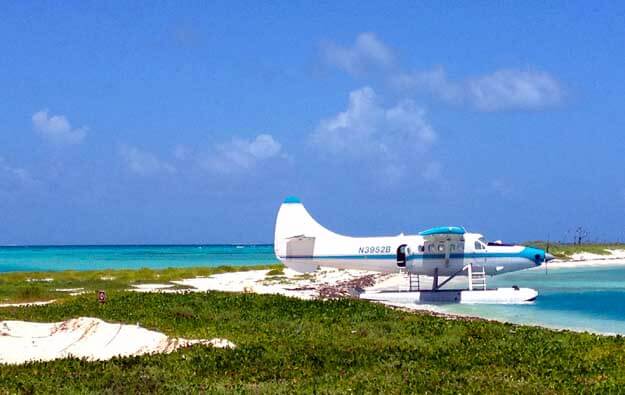
The Ferry is well equipped with a delightful staff and an onboard naturalist who shares the complete story behind the Dry Tortugas, including a tour of the fort.
The outbound trip to the island lasts two and one-half hours. You’ll pass the Marquesas Islands, Boca Grande National Bird Sanctuary, and deep sunken shipwrecks.
Keep your eyes open for dolphins and sea turtles.

Upon arriving, the ferry docks for the day, and you get to choose from a wide assortment of things to do.
Hiking the fort, snorkeling the spectacular waters, relaxing on the beach, and birding for rare and unique species are just some enjoyable ways to spend your day.
Primitive camping is offered for those who want to stay longer.
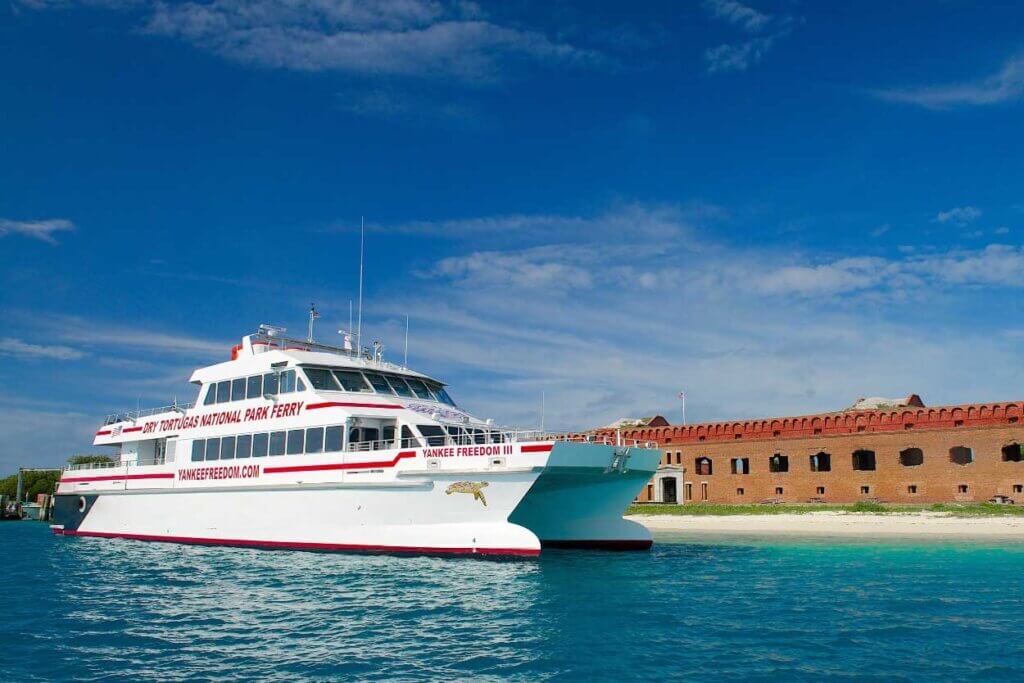
The boat serves as your base, as there are no restrooms, snack bars, or phones on the island. The national park staff uses generated power to collect rainwater in cisterns.
There is a small park store in the fort where you can also get more information and souvenirs.
Fort Jefferson History
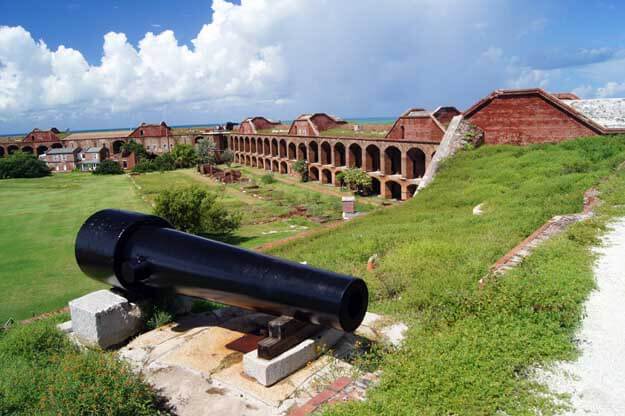
More than 16 million red, handmade bricks make up the hexagonal (6-sided) fort. Thick eight-foot-wide walls towering 45 feet high form one of the nation’s largest masonry forts ever built.
The massive design of the fort gave the U.S. an opportunity to house huge cannon and gun platforms on several levels for strategic placement. The walls meet at corner bastions, allowing the mounting of heavy machinery.

The inside walls provided space for open gunrooms, or casemates, with large openings called embrasures facing outward towards the sea.
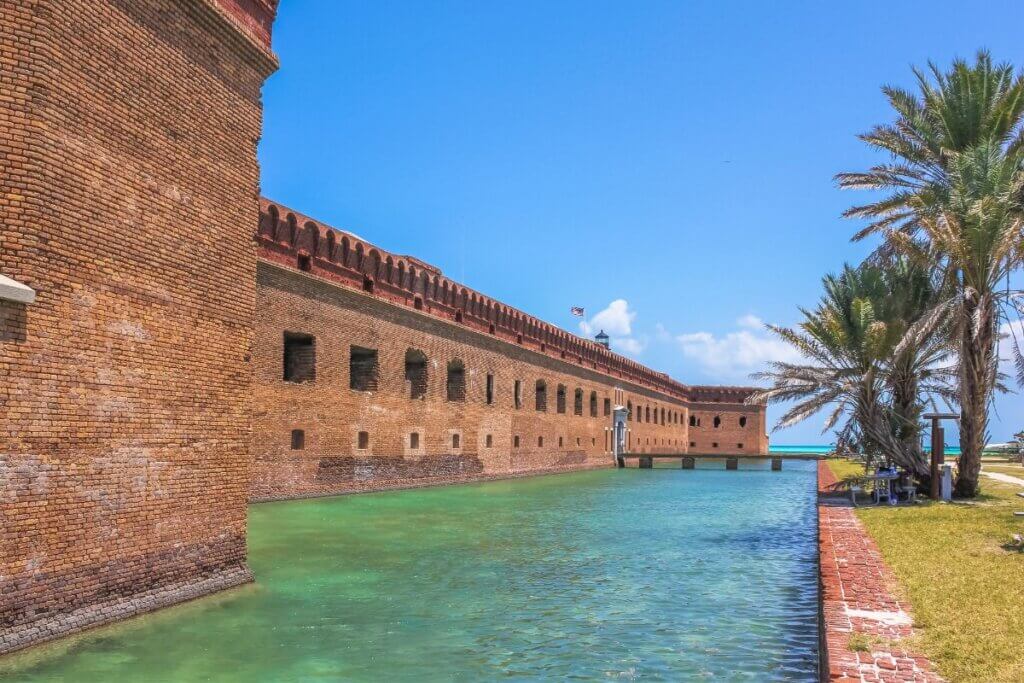
Surrounded by a moat, this intimidating fort never actually saw active combat but was home to thousands of soldiers as well as civilian workers who lived in the remote setting.

Seeing their quarters and realizing that hot and humid weather was the norm, you realize that these were rugged people, especially the soldiers who wore heavy wool uniforms while serving military duty, watching criminals and Union deserters.
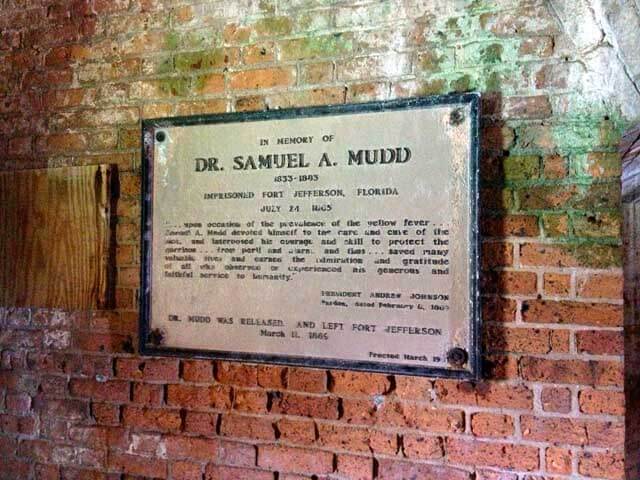
Most notable of the prisoners was Dr. Samuel Mudd, responsible for tending to John Wilkes Booth’s injury following the assassination of President Abraham Lincoln.
Although sentenced to life imprisonment, President Andrew Johnson pardoned and released Mudd.
Fort Jefferson Walking Tour
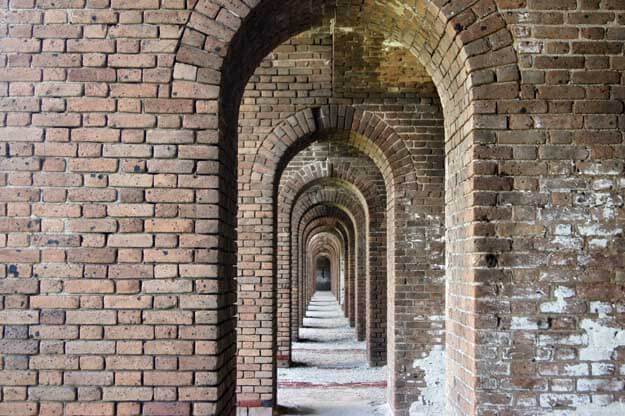
Walking through the fort, you’ll gain an appreciation for life in the mid- to late-1800s.
Tour the grounds, visit the prisoner cells, and walk through arches and up staircases rising several stories to a spectacular 360-degree view while admiring the restored military machinery and breathtaking scenery.

It is easy to picture the Fort Jefferson soldiers aggravated and weary of the everyday tedium. Almost 2,000 lived in the Fort during its peak years, which included families.
Diseases and hurricanes added to the challenge of daily living. By 1888 the fort was no longer essential for maritime or coastal defense and was abandoned as a military outpost.
It was later designated as a national monument.
Snorkeling

You’ll enjoy snorkeling in the recommended areas. The pristine marine ecosystem with its shallow clear water is every bit worth it.
We particularly enjoyed the snorkeling around the coaling dock ruins where we found an abundance of multi-colored sea fans, grasses, sponges, brain coral, and gorgeous reef fishes.
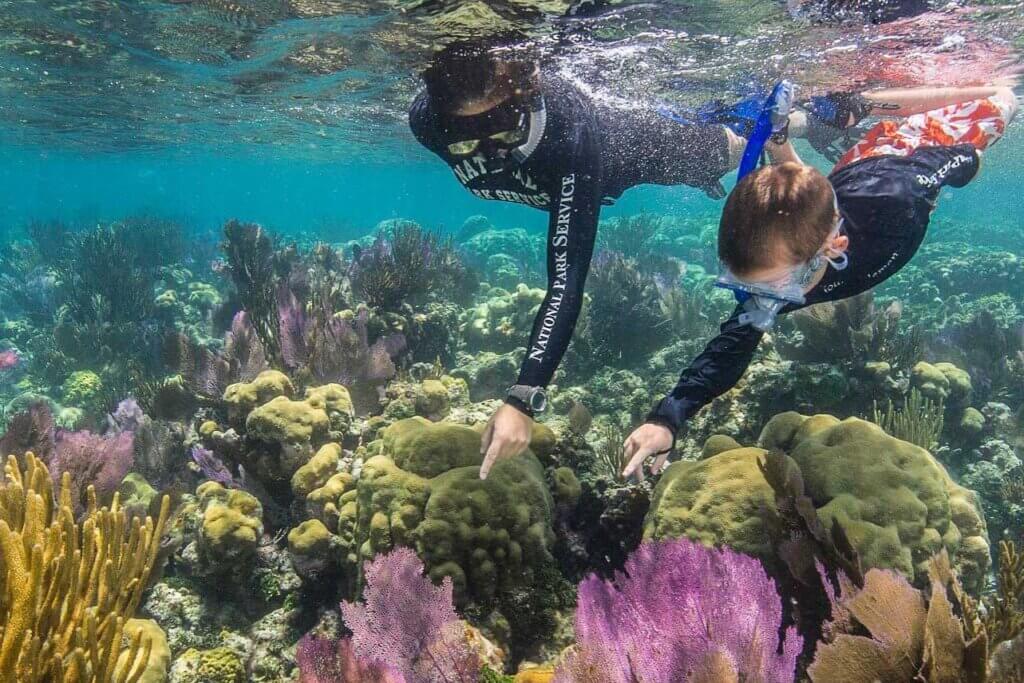
You’re likely to see turtles as well and many believe the Dry Tortugas beaches are the best in the Florida Keys.
Wildlife Refuge and Birding Haven
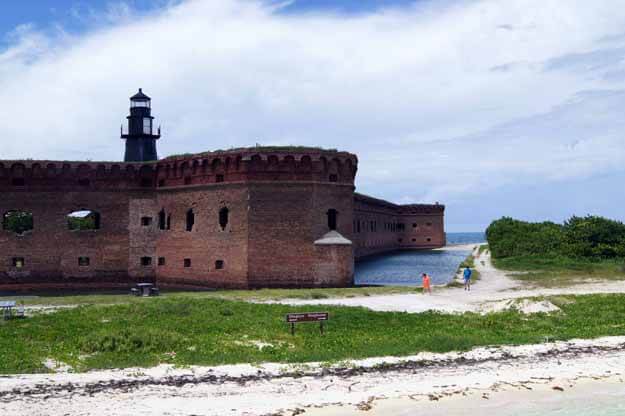
Designated a national park in 1992, it was designed to protect national treasures, endangered turtles, birds, and marine life. Migrating birds use the Dry Tortugas as a key stopover.
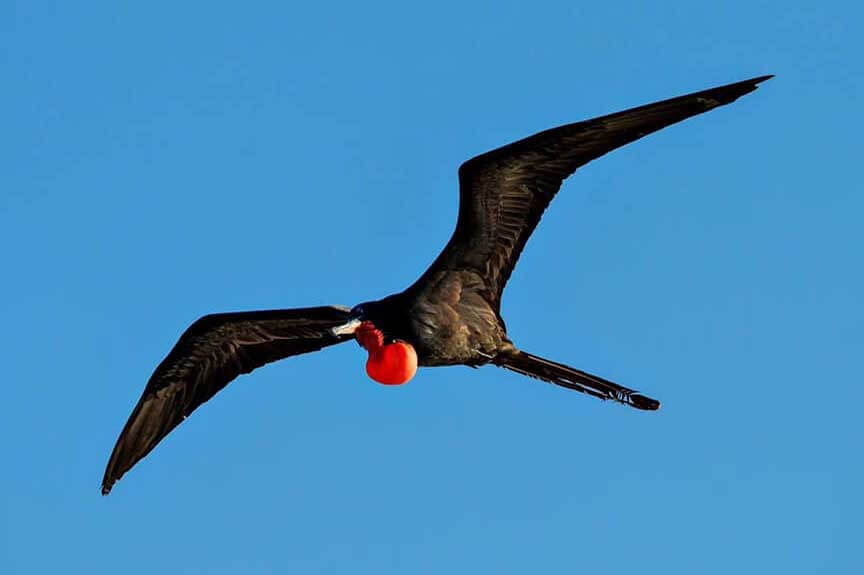
Between February and September, more than 80,000 Sooty Terns gather on nearby Bush Key to nest.
Rare Brown Noodies also stop in the island vegetation on Bush Key, while Frigate birds, with a seven-foot wingspan, inhabit Long Key.
Plenty more species (more than 280) can be seen and admired — so don’t forget the binoculars.
Walk the Moat
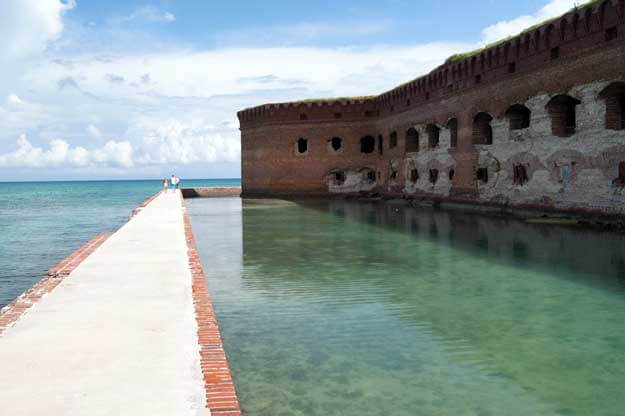
Be sure to walk the sea wall of the fort’s surrounding moat. Capture fabulous photography on the hike in addition to the vistas from the high points of the fort.
Don’t Forget

Don’t take anything out of the park – shells, marine life, or artifacts. You can look but don’t touch – especially coral. Once the coral is touched, it dies.
But you can take your pictures. They serve as beautiful reminders of this incredible adventure.
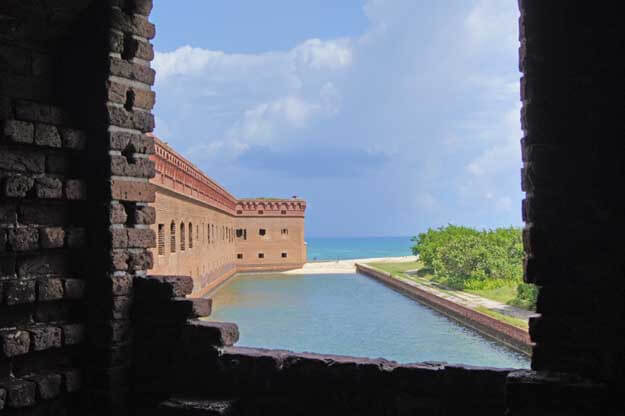
Looking for more Florida Fun?
- Step Back in Time at these Four Florida Forts
- Enjoy a Fun-Filled Weekend In Authentic Key West
- 6 Best Places to Swim with Dolphins in the Florida Keys
- The 14 Best Key Lime Pies in the Florida Keys
- The Island of Marathon, Florida, in the Heart of the Keys
- Best Things to Do in Islamorada (2024)
- Celebrating the Independence of the Conch Republic

